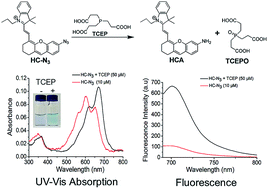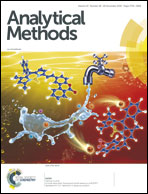A selective and sensitive azido near-infrared fluorescent probe for tris(2-carboxyethyl)phosphine quantitative detection and its application for E. coli determination†
Abstract
We developed a sensitive near-infrared fluorescent probe, azido hemicyanine (HC-N3), for the detection of tris(2-carboxyethyl)phosphine (TCEP) with the lowest LOD (92 nM) so far. HC-N3 has good selectivity for TCEP among thiols and 20 kinds of natural amino acid. The quantification of E. coli (101–103 cfu mL−1) demonstrated its practicability in complicated biosystems.



 Please wait while we load your content...
Please wait while we load your content...